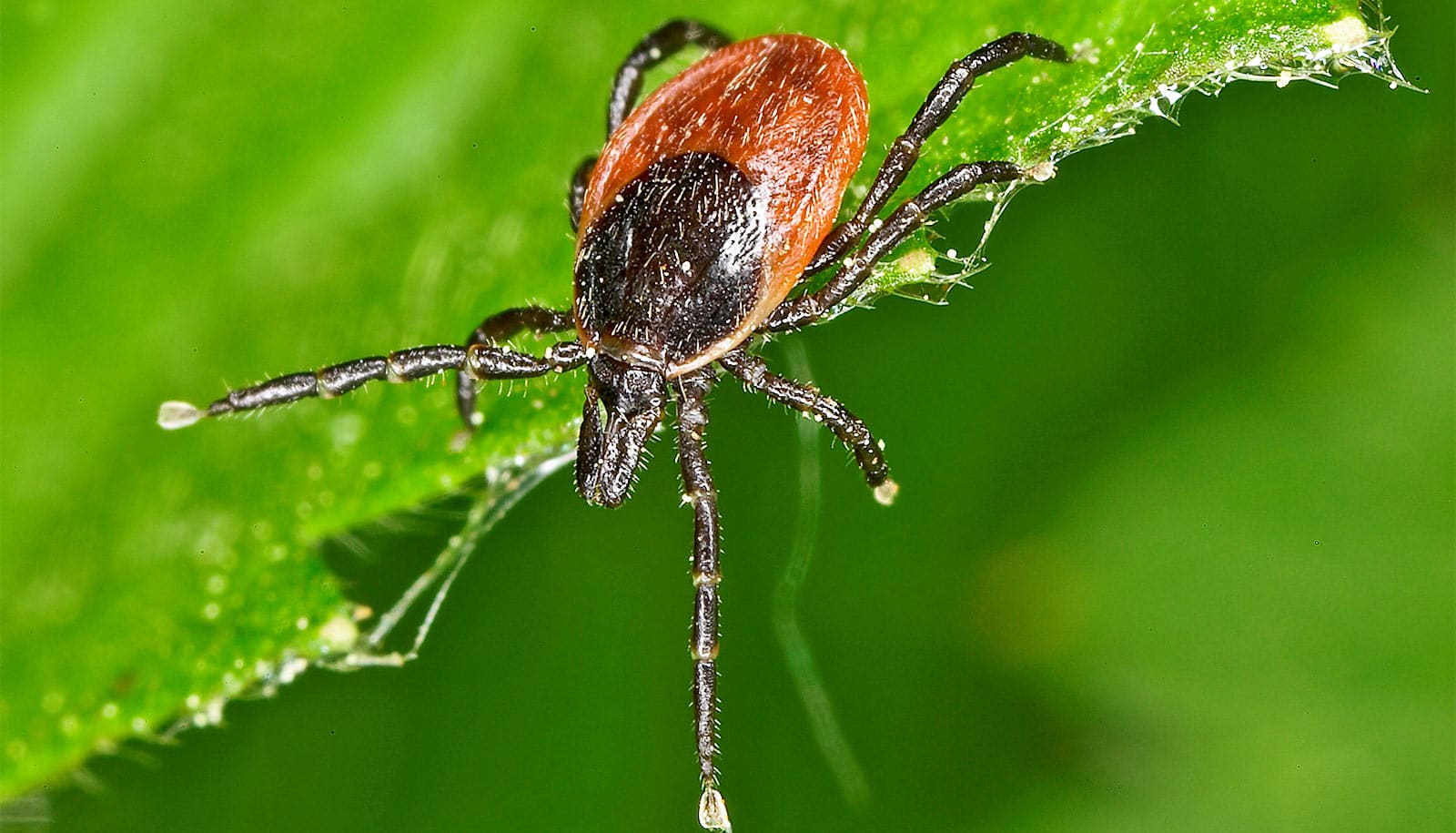Warm weather means tick season. But there are ways to protect yourself.
Here, experts offer tips for keeping the vectors—and the infections they transmit—away.
If you’ve ever found a tick on yourself or your child, you might have experienced a sense of panic at the sight of the tiny arachnid. And there’s reason to worry. Ticks are vectors that can carry serious diseases, including Lyme disease, which nearly half a million people in the United States contract each year.
Lyme occurs as part of a complex chain of infections. Ticks carrying the bacterium Borrelia burgdorferi pass it on to hosts, such as mice and other animals that get infected, which pass on the infection to new ticks, ensuring its spread.
When infected ticks bite humans, the bite delivers bacteria to the skin, which migrate through the skin and sometimes into the bloodstream, causing Lyme.
For most individuals, antibiotics can cure the disease and fend off any complications, especially if started soon after a bite occurs. However, Lyme disease diagnosis early on relies on recognition of the rash, as blood tests take several weeks to turn positive.
Undiagnosed cases can lead to serious complications, such as arthritis, meningitis, or heart problems. In 10 to 20% of cases, patients experience persistent fatigue, joint pain, mental impairment, and other symptoms that can last for months or years.
“Lyme’s manifestations can be perplexing,” says Linden Hu, professor of immunology at Tufts University School of Medicine. “And its effects are far-reaching. Our best strategy for tackling it is to prevent its occurrence, and the best way to do that is to get rid of it at its source.”
As co-director of the Tufts Lyme Disease Initiative, Hu is working on doing just that. With co-director Robert P. Smith, a physician at Maine Medical Center and professor of medicine at the School of Medicine, and Sam Telford III, professor of infectious disease and global health at Cummings School of Veterinary Medicine, they have assembled a team of multidisciplinary researchers with the aim of eradicating Lyme by 2030.
Here’s how people can protect themselves from ticks and Lyme disease and stay healthy outdoors:
1. Enjoy the natural world—but avoid tall grass and dense brush
“Ticks have an incredible ability to hitchhike,” Telford says. They like to sit on reeds, twigs, woody stems, and blades of grass and wait for passersby. Stay out of overgrown areas and, when possible, stick to the middle of hiking trails. “Doing so will reduce the chances of a tick hopping on for a ride,” he says.
2. Dress for success
What you wear matters when it comes to preventing tick bites. Light-colored clothing allows you to easily spot the dark-colored creatures. Long-sleeved shirts protect your arms, while long pants protect your legs. Tuck pants into socks to create a full barrier between the tick world and your skin. Closed shoes are a must.
Telford takes no chances. “It’s not just Lyme,” he points out. “Deer ticks alone can spread five different infections. So many infectious agents occupy our woods.”
3. Use proven repellents
Don’t shy away from DEET, Hu advises. Find a product that includes at least 20% DEET and spray repellent on your skin, ideally in an open area, according to the directions on product labels.
The Centers for Disease Control and Prevention (CDC) says DEET can be used on children and infants older than two months. The CDC advises parents and caregivers to avoid children’s hands and around the eyes and mouth when applying DEET, and children under 10 shouldn’t apply repellent to themselves.
In addition, consider spraying clothing, shoes, and camping gear with insecticides that contain 0.5% permethrin. Follow label instructions, apply the chemical in a well-ventilated area, and keep the spray and any still-wet treated items away from cats, as permethrin is toxic to them (dry-treated clothing poses little risk). An alternative is to purchase pre-treated gear.
4. Conduct regular checks for ticks
No matter how careful you are on the trails or how defensively you dress, the ticks might still find a way. To ensure that you catch any feeding creatures quickly, check yourself, children, and pets every time you return indoors.
Telford says the best way is to take a shower and feel for new bumps on soapy skin. Showering can wash away ticks before they have a chance to bite. Pay special attention to areas where ticks try to hide: under the arms, in and around the ears, inside the belly button, behind the knees, between the toes, under hair, in groin areas, and near the waist. It’s also important to wash clothing after time spent outdoors.
Ideally, you’ll catch ticks within 24 hours after they’ve latched on. They usually transmit Lyme disease after being attached 36 to 72 hours. Finding and removing them early is one key to preventing illness.
5. If you find a tick, don’t panic! Remove it
Use pointed tweezers and grasp the tick at its mouth, where it’s attached to your skin. Pull back slowly, steadily, and firmly, like you would for a splinter.
Be patient, advises Telford: the part of a tick that enters the skin, the hypostome, is covered with sharp barbs, and ticks create a cement-like substance during feeding—these things can make removal difficult. But if you keep steadily (not sharply) pulling, you will eventually ease the tick out of the skin. Don’t worry if you pull too hard and leave the head buried in the skin. It is best not to try to remove it further and it will come out on its own as your skin sheds.
Once the scoundrel is out, clean the entry area with soap and water. “As is true any time something foreign breaks through the skin, you want to clean the area carefully to avoid infection of any kind,” Hu says.
6. Watch for rashes and don’t ignore flu-like feelings
After you’ve spent time outdoors, if you discover a rash on your skin, see a doctor—especially if that rash has a bullseye shape or a circular shape that expands over a day or two. Let your doctor know you’ve been in nature and ask for a Lyme test.
Keep in mind though, Hu says, that not all tick bites produce the infamous bullseye—or lead to any kind of rash at all. As a result, it’s important to also pay attention to how you’re feeling. Within a few weeks after spending time in wooded areas, see a doctor if you feel fatigue, fever, aches and pains, or headaches.
But don’t bother testing the tick for Lyme, Telford says, because most tick bites are not infectious, and even if it tests positive, it may not have transmitted the infection.
Source: Amy Rosenberg for Tufts University


